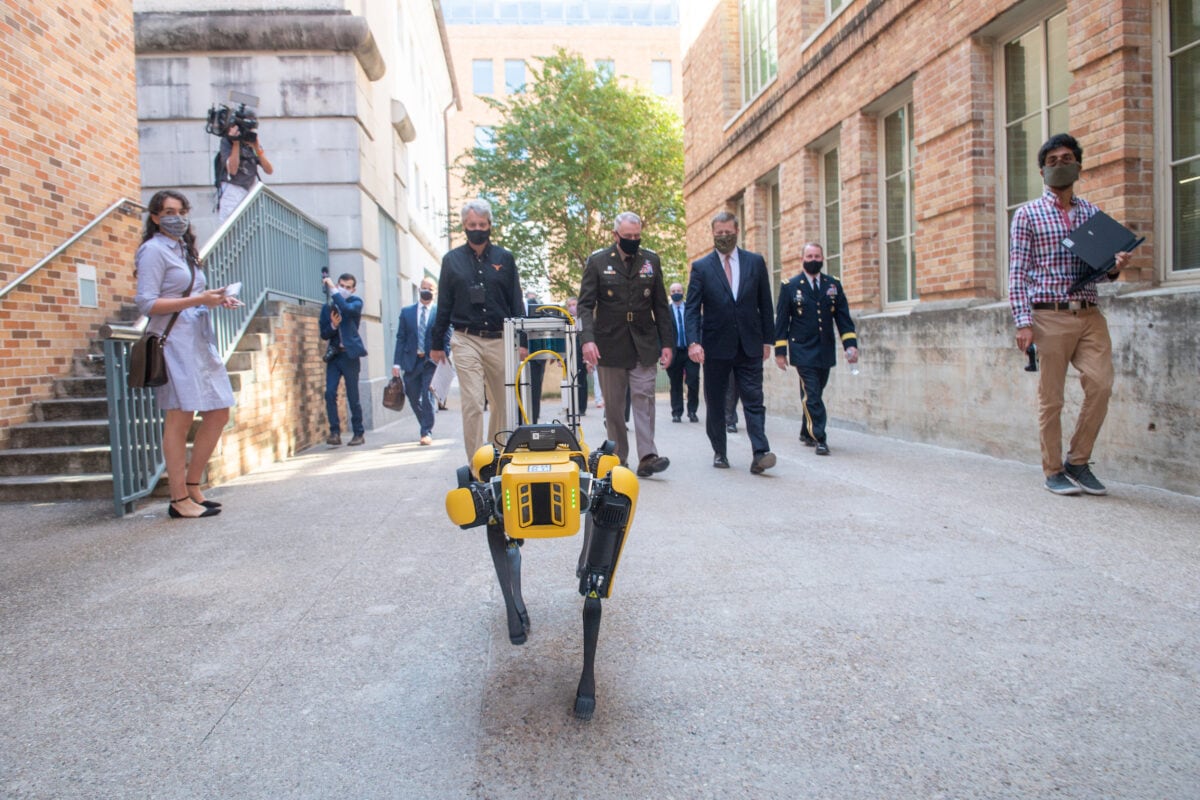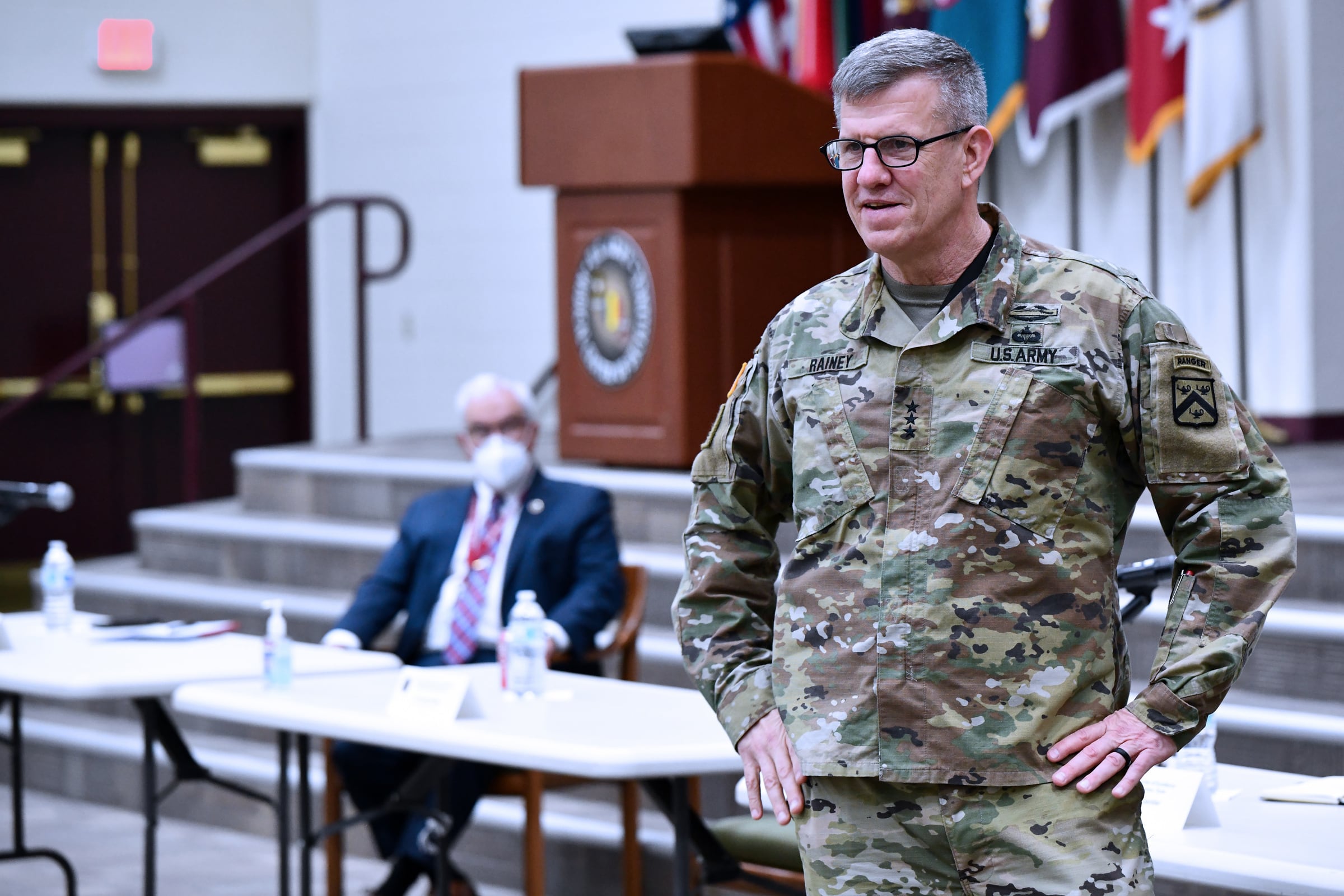AUSTIN, Texas — After 10 months without a confirmed commander at Army Futures Command, Gen. James Rainey took over in an Oct. 4 ceremony at the Lyndon Baines Johnson Presidential Library here in front of a crowd comprising nearly all Army leaders involved in creating the now four-year-old outfit.
Rainey’s last job was on the Army staff as the head of the G-3/5/7 directorates, leading the service’s transformation at the Pentagon. He previously led the Combined Arms Center at Fort Leavenworth, Kansas.
In a speech, Army Secretary Christine Wormuth praised Rainey as “the right leader to build on the excellent work of generals Mike Murray and Jim Richardson, and take AFC into this next phase of delivering the Army of 2030 – as well as looking ahead to what we will need in 2040.”
Wormuth touted Rainey’s achievements in prominent Army planning processes, including his involvement in the Army Campaign Plan, the Total Army Analysis, the global force management mechanism, supporting operations at the Southwest Border and responding to presidential drawdowns for Ukraine.
Rainey took the reins from Lt. Gen. James Richardson, who served as the acting commander following the retirement of AFC’s first leader, Gen. Mike Murray, in December 2021, as the Army worked through who would be nominated to the job. Richardson retired in a ceremony directly following.
The Army had been without a commander at Austin-based AFC for a record amount of time because officials worried the front-runner for the job, Lt. Gen. Walter Piatt, would not receive congressional approval after he allegedly had reservations about deploying the National Guard during the Jan. 6 attack on the Capitol.
Defense News first reported Sept. 6 that the Army was likely to nominate Rainey, the G-3/5/7 chief in charge of Army strategic operations at the Pentagon, to lead Army Futures Command.
The lack of a confirmed commander led to uncertainty at the fledgling command and some turnover.
RELATED

In his speech, Rainey told the audience that Texas is his “family’s natural habitat” and noted his experience in helping to shape AFC five years ago with fellow Army leaders, pulling late nights at the Pentagon “white-boarding” how to make the command and organization happen.
Rainey also said he learned a great deal from former AFC commander Murray when he worked with the organization to help develop multi-domain operations doctrine as leader of the Combined Arms Center.
“Just to be real clear on where I stand,” Rainey said. “I think AFC was a bold idea, that is absolutely critical to the success of our Army and the defense of our nation and is absolutely what we should be doing.”
The Army “will absolutely deliver” a modernized force in 2030 and is designing the force of 2040, he added.
“Who has what authorities and roles — that’s important, that matters. But what’s way more important is who has the best ideas and who can work together to get things done,” Rainey said.
In an interview as Wormuth traveled back to Washington, DC, she told Defense News that she expects to see a 90-day assessment on the state of AFC as Rainey begins work.
But Wormuth stressed her first priority for Rainey will be for him to get 24 systems in the hands of soldiers by the end of fiscal 2023. The Army hopes to have fielded 35 signature systems across its six modernization priorities by 2030: Long-Range Precision Fires, Next-Generation Combat Vehicles, Future Vertical Lift, the Network, Air-and-Missile Defense, and Soldier Lethality.
Wormuth’s second priority for Rainey is to look beyond 2030 out another decade, at least to figure out what kind of new operational challenges might present themselves and what kind of concepts and requirements might need to flow from that.
Jen Judson is an award-winning journalist covering land warfare for Defense News. She has also worked for Politico and Inside Defense. She holds a Master of Science degree in journalism from Boston University and a Bachelor of Arts degree from Kenyon College.




